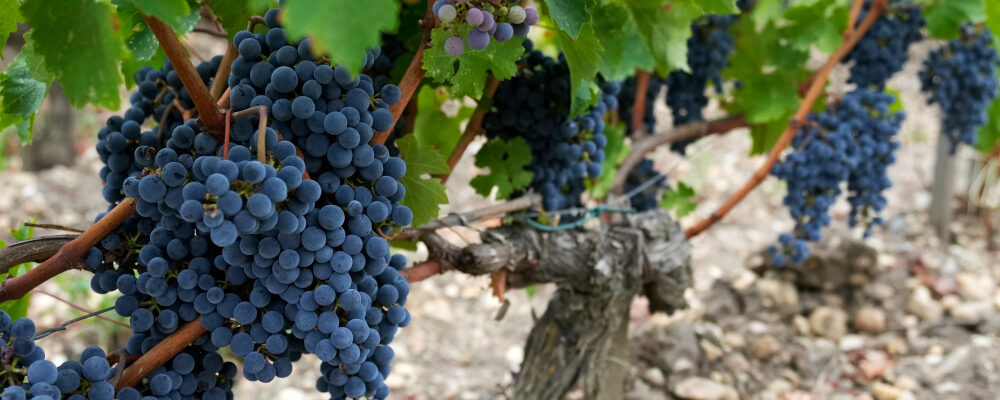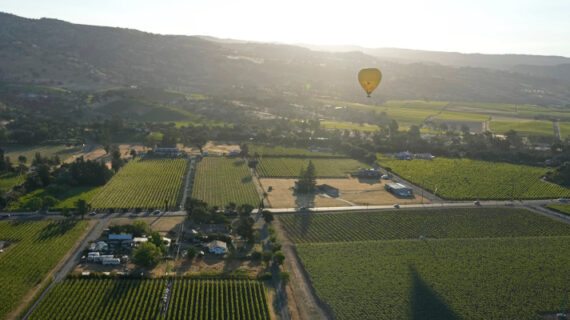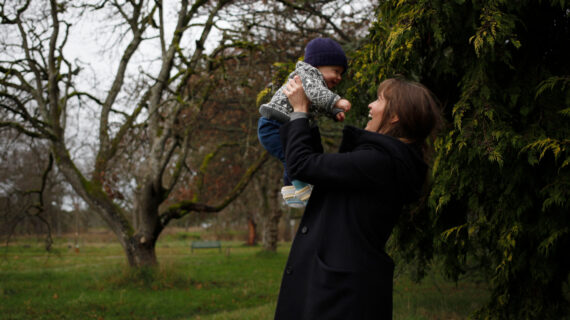Cabernet Franc is an orphan grape, meaning whatever varieties bred together to make it ages ago have disappeared into extinction. Perhaps, a thousand or so years ago, it was with this knowledge that Cabernet Franc set about having children of its own, like Merlot and most famously Cabernet Sauvignon, the latter being the lovechild of a dalliance with Sauvignon Blanc. And like all good and devoted parents, Cabernet Franc has been by and large happy to step back and see its widely planted progeny find success and renown in the world of wine.
Cabernet Franc is likely best known as one of the grapes in a Bordeaux blend, or Meritage blend from California. For a viticulturist, Cabernet Franc’s main talent is its ability to ripen early, or at least earlier than most other red wine grapes. In the pre-global warming climate of the mid to late twentieth century, this would have been particularly valuable in Bordeaux, where the vignerons could at least count on it to ripeness over a cool growing season. Further north in the cooler Loire Valley, its ability to ripen early made it the overwhelmingly dominant red wine grape.
Cabernet Franc does well in another cool climate that’s close to my home, the Niagara Peninsula and the other wine-producing regions of Southern Ontario. It responds well to the limestone soils of the Niagara Escarpment. At Thirty Bench, winemaker Emma Garner’s Cabernet Franc from the Beamsville Bench is among the most prized-after Niagara reds, while Norman Hardy’s Cab Franc from limestone-riddled Prince Edward County doesn’t get the attention of his Pinot Noir, but is a perennial fan favourite, for those that know.
Looking back to France, the wines of the Loire Valley are best known in export markets like ours for the whites; especially for Sauvignon Blanc and particularly for the relatively far eastern regions of the valley, Sancerre and Pouilly-Fumé. Further down the river, towards the Atlantic, roughly between the old medieval cities of Tours and Angers, is where we find the red wines, nearly all of them from Cabernet Franc vines.
The great commercial advantage enjoyed by the winemakers of Bordeaux is its deep water harbour, which made for easy exports to Britain, the Low Countries, and eventually North America and beyond. While the Loire has the port of Nantes, once the capital of seafaring Brittany, the importance of the Loire to its winemakers ran the other way: it was historically the river itself.
The Loire is France’s longest river, and it makes a long arc from its source in the Massif Central to the Atlantic. About midway, at Orléans, the river is only 120 kilometres to Paris. The bulk of the wines of the Loire, especially the reds, have always been bound for the capital and its bistros. This is in part why you see relatively few Loire Cabernet Franc bottles in Canada, at least outside of Quebec: the Parisians and fellow Northern French drink most of it.
When compared to its Cabernet Sauvignon or Merlot offspring, Cabernet Franc is often described as lighter, with more red than black fruit notes. Sometimes it’s also described as a bit more fragrant. As with all vinous things, the exceptions to these rules are multiple and a concentrated Cab Franc from a warm year (which seems to be every year now in Europe) can be just as rich and complex as any red wine. Still, the Loire Valley Cabernet Francs tend to show good, bright and lively acidity, which places them firmly in the camp of the vins gastronomiques.
Great wine pairing seems to be a chicken and egg game. Did the wine find the food, or the food the wine? Or if it isn’t, a third way of explanation would be to say they are symbiotic: most of the classic ones seem to involve matching the wines of a place to its foods. The Loire Valley is sometimes called the garden of France, as just about any French ingredient can be found, grown, or raised there. And, like the wine, a lot of it ends up in Paris.
There are lots of red wines that pair just fine with bistro fare—which is to say popular—foods of France, but there is a strong argument to be made that a typical Loire Valley Cabernet Franc is versatile enough to go with just about all of them: light enough for seafood or for white meats like sweetbreads, but also big enough for anything from calf’s liver to duck confit to good old steak frites. In this way, there are few home-cooked meals chez moi that wouldn’t welcome a glass of the lighter Cabernet.
All of this is why I was delighted to find a bottle of the 2018 Saumur-Champigny Lieu Dit Les Poyeux on the shelves of the Liquor Control Board of Ontario store near me. The French wine term lieu dit can be literally translated to “place said”, but might be more accurately (and poetically) transposed as “the place we call”. Les Poyeux is a hillside vineyard a little south of the Loire near the town of Sauzur-Champigny, which is famous for its caves.
Since before recorded history, those caves have been carved out of the soft yellow chalky limestone the locals call tuffeau. Lightweight, it’s easy quarry and ideal for floating up or down a river to build so many cathedrals, abbeys and fairytale castles, like the big one nearby at Saumur. It’s also fantastic at letting vines grow long roots deep into it, in search of water and minerals dissolved therein. Of all the red wine regions of the Loire, Saumur-Champigny has the most tuffeau, which makes wines that are paradoxically both soft and deep in flavour.
The Les Poyeux is made by a co-operative begun in the 1950s, named after two of its founding farmers: Marcel et Robert. Like a Clos in Burgundy, individual farmers claim particular rows at Les Poyeux, and the co-operative happens to have six there that contribute to the wine. In concert, the farmers leave their Cabernet late on the vines, typically picking well into October, then the must is left to macerate on its skins for 22 days, to bring out a brooding, blackberry fruited wine despite its light strawberry nose. Mixed into this is the telltale Loire Cabernet Franc note of pencil shavings. Also, it’s $19 a bottle.
The Marcel et Robert 2018 Saumur-Champigny Lieu Dit Les Poyeux is a great deal, and there are many other great Loire deals to be had, if you are lucky enough to be in a market with an allotment of it, now and again. Of course, there are lots of more expensive, and more sophisticated, Saumur-Champigny Cabernet Francs out there, mostly sold by the case to restaurants or collectors. And also wines from neighbouring regions like Chinon and Bourgueil that are worth checking out if you can find them. The upshot is that the red grape that made it in the Loire when it was too cold for much of anything else to work is having a bit of a moment in warmer times, and more often than not it’s worth a try.




